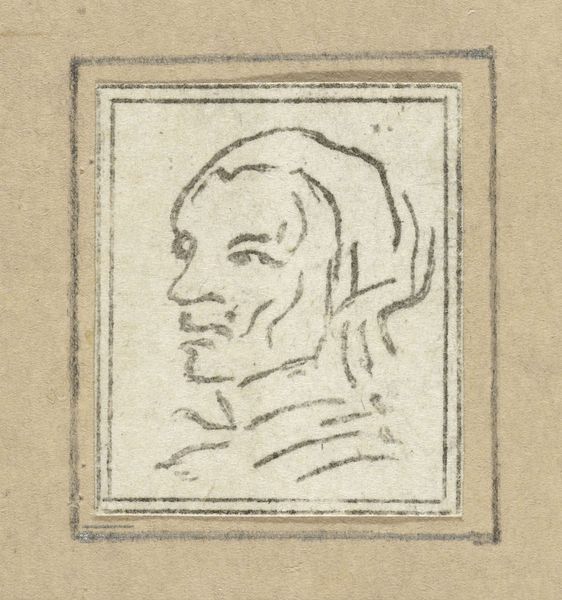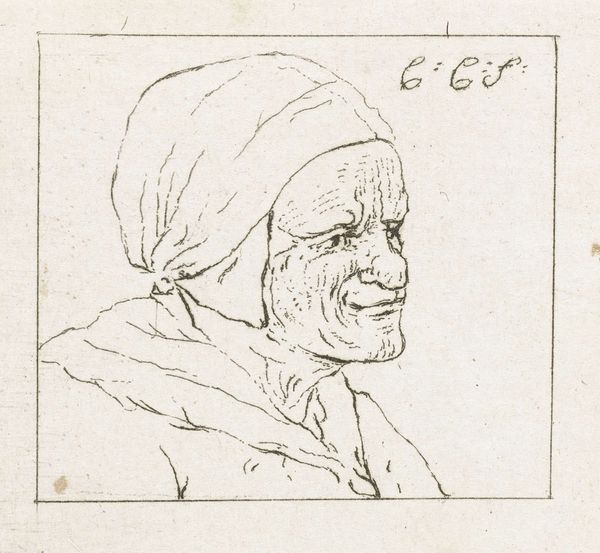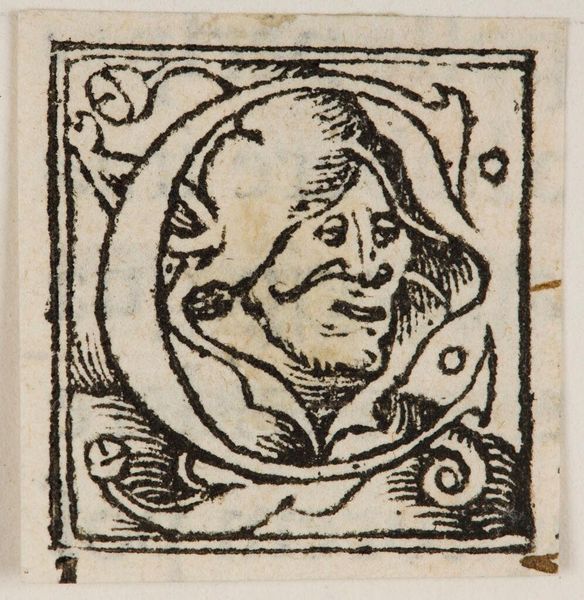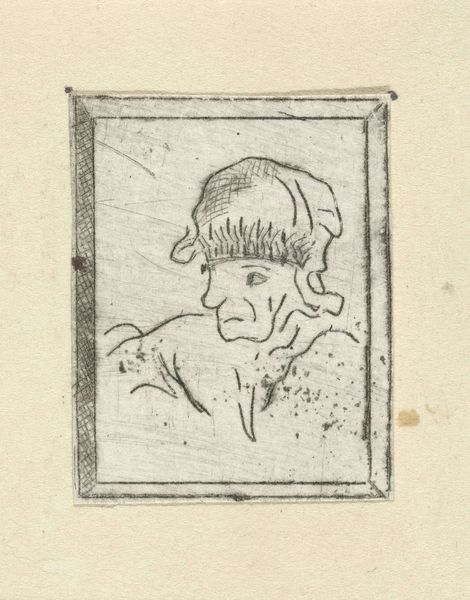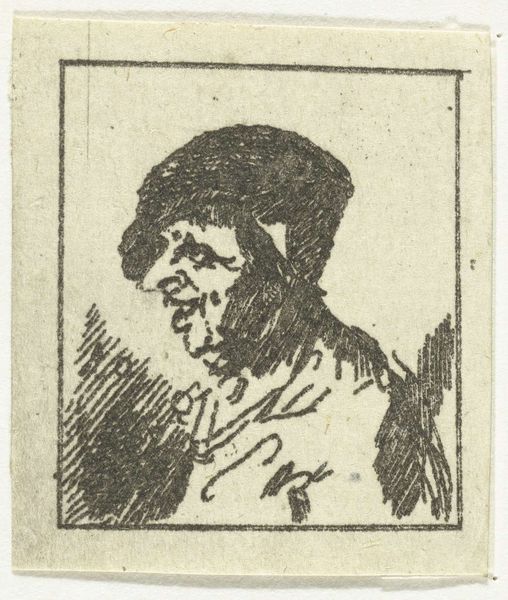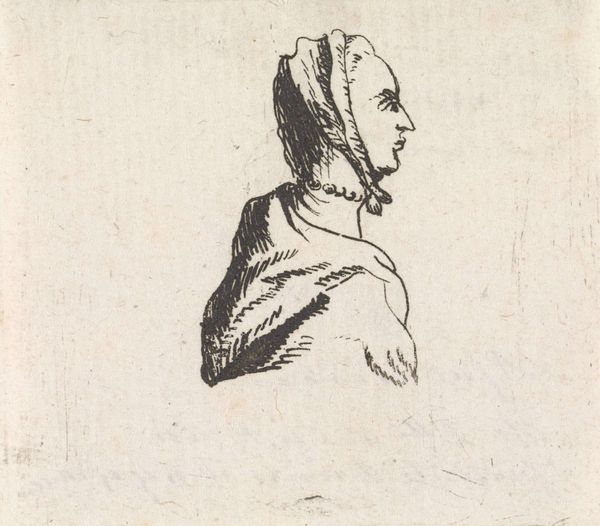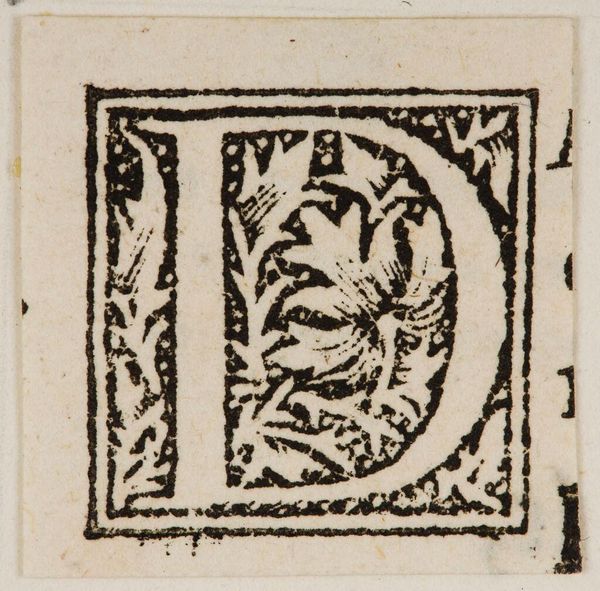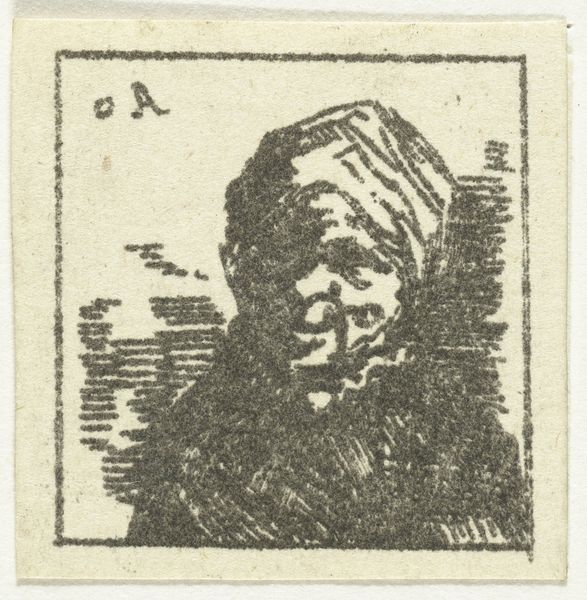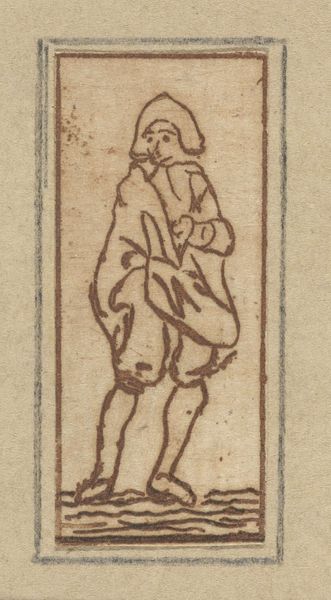
drawing, paper, ink
#
portrait
#
drawing
#
figuration
#
paper
#
form
#
ink
#
line
Dimensions: height 23 mm, width 19 mm
Copyright: Rijks Museum: Open Domain
Curator: Jacob Hoolaart, a Dutch artist, likely made this drawing titled "Vrouwenkop" sometime between 1728 and 1789. It is executed in ink on paper. What strikes you when you see this image? Editor: It's remarkably economical, isn't it? The fewest possible lines to convey form, texture. The subject has a pensive air. I’m intrigued by the graphic impact achieved with such simplicity. Curator: Absolutely. The era saw increased portraiture's significance reflecting emerging societal shifts. Hoolaart likely catered to a burgeoning middle class keen on personal representation. The loose lines perhaps signify a move away from the rigid formality of aristocratic portraiture. Editor: Look at the placement of the lines around the headscarf and the suggestion of the drapery! It creates volume and depth, almost implying an ethereal glow, despite the starkness of the ink. There’s something incredibly skillful about that economy. Curator: The placement of such images within the domestic space reinforced emerging ideas of individualism and privacy. Portraits became tools for constructing and broadcasting personal identity. What about the gaze? Editor: The gaze is directed away, internal. The use of line suggests shadow under the eye, a subtle yet powerful indication of mood, implying the figure's deep in thought, perhaps even melancholic. Curator: And think about the rise of the printing press, fostering broader artistic dissemination, particularly within the Netherlands during Hoolaart’s lifetime. These portraits also served political ends – forging connections and promoting shared ideals among an increasingly connected populace. Editor: It's fascinating how just a few strokes create not just form but also an atmosphere. It begs the question, doesn’t it, what we choose to reveal—or conceal—through such visual parsimony. A perfect example of the maxim, less is more. Curator: Indeed, this simple yet evocative drawing allows us to peer into both individual likeness and a particular societal milieu. Editor: I'll never look at a simple line drawing the same way again. It’s a testament to the expressive potential within even the most austere formal means.
Comments
No comments
Be the first to comment and join the conversation on the ultimate creative platform.
